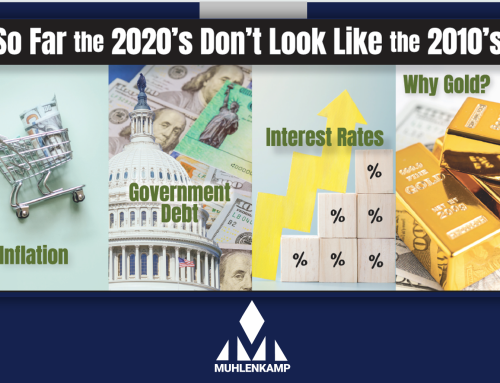
Letter to My Daughters: On Inflation as a Benchmark
In my last letter,[1] I talked about the various risks you have to contend with as an investor, and that different risks become more or less critical depending on what you are trying to do and the time frame you have for doing it. Now I want to discuss inflation, which I think is the paramount risk you face when trying to accomplish long-term financial goals.
There are various definitions of inflation, and different theories about what causes inflation, all of which are interesting and can be useful depending on the situation, the discussion, and the problem you are trying to solve. As an investor and consumer, I define inflation as the loss of purchasing power, and the risk of inflation is the high probability that my dollars will lose purchasing power over time.
The rate at which my dollars lose purchasing power is also the subject of much debate; there are several competing methods for measuring and calculating inflation, and they become increasingly esoteric. I like to keep it simple, so I look at a good or service that has remained largely unchanged over time and compare what it costs me today versus what it cost me years and decades ago. A financial planner named Nick Murray wrote an article years ago suggesting postage stamps as a good proxy for inflation, and I haven’t come up with a better idea.
A first-class stamp today can deliver a letter anywhere in the country in 1-3 business days, much as it did in the 1960s. The difference is, a first-class stamp cost $.06 in 1968, and today it costs $.73. That is over twelve times as much in 61 years for an annual rate of increase of 4.2% a year. That’s my postage stamp definition of inflation; my dollar has lost purchasing power at the rate of 4.2% a year since 1968.
Two other measures of inflation are the Cost of Living Index (COLA) and the Consumer Price Index (CPI). The Cost of Living increase calculated by the American Institute for Economic Research for that same period is 3.7% annually[2], and the increase in the CPI is 3.7% annually, so I think my postage stamp is reasonable[3].
Which means that my 1968 dollars had to grow by 4% a year just to BREAK EVEN with inflation. So any money I am saving today for 10, 20, or 30 years from now has to earn some return OVER inflation in order for me to be better off. The greatest risk to my assets over the long term is the loss of purchasing power. I use inflation to measure just how much purchasing power I am losing, so the rate of inflation becomes the benchmark I need to EXCEED as an investor trying to grow assets to use in the future.
Everything I do as an investor is measured in dollars, but those dollars “shrink” over time, so the first thing I have to do is grow the dollars enough to offset the shrinkage, and then grow them some more in order to improve my financial situation. We’ll talk more about what you can do to grow your assets over and above inflation, but let me know if you have any questions so far.
[1] https://library.muhlenkamp.com/letter-to-my-daughters-on-investment-risk/
[2] https://aier.org/cost-of-living-calculator/ Please note that clicking here leaves the Muhlenkamp and Company website and enters a third-party website. Muhlenkamp is not responsible for, nor can guarantee the accuracy of, any information contained on a third-party website.
[3] https://www.bls.gov/data/inflation_calculator.htm Please note that clicking here leaves the Muhlenkamp and Company website and enters a third-party website. Muhlenkamp is not responsible for, nor can guarantee the accuracy of, any information contained on a third-party website.
The opinions expressed are those of Anthony Muhlenkamp and are not intended to forecast future events, guarantee future results, or offer investment advice.








